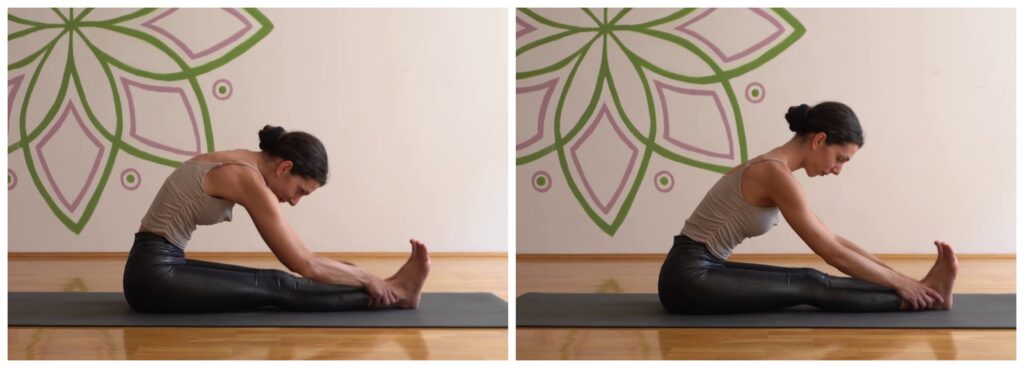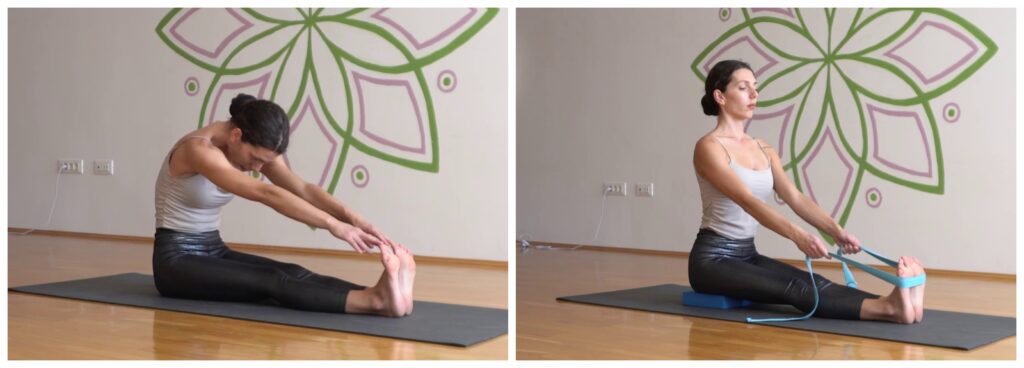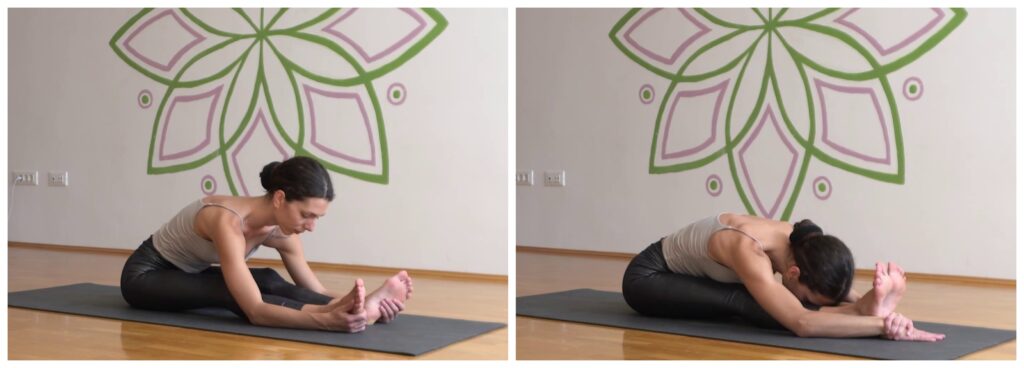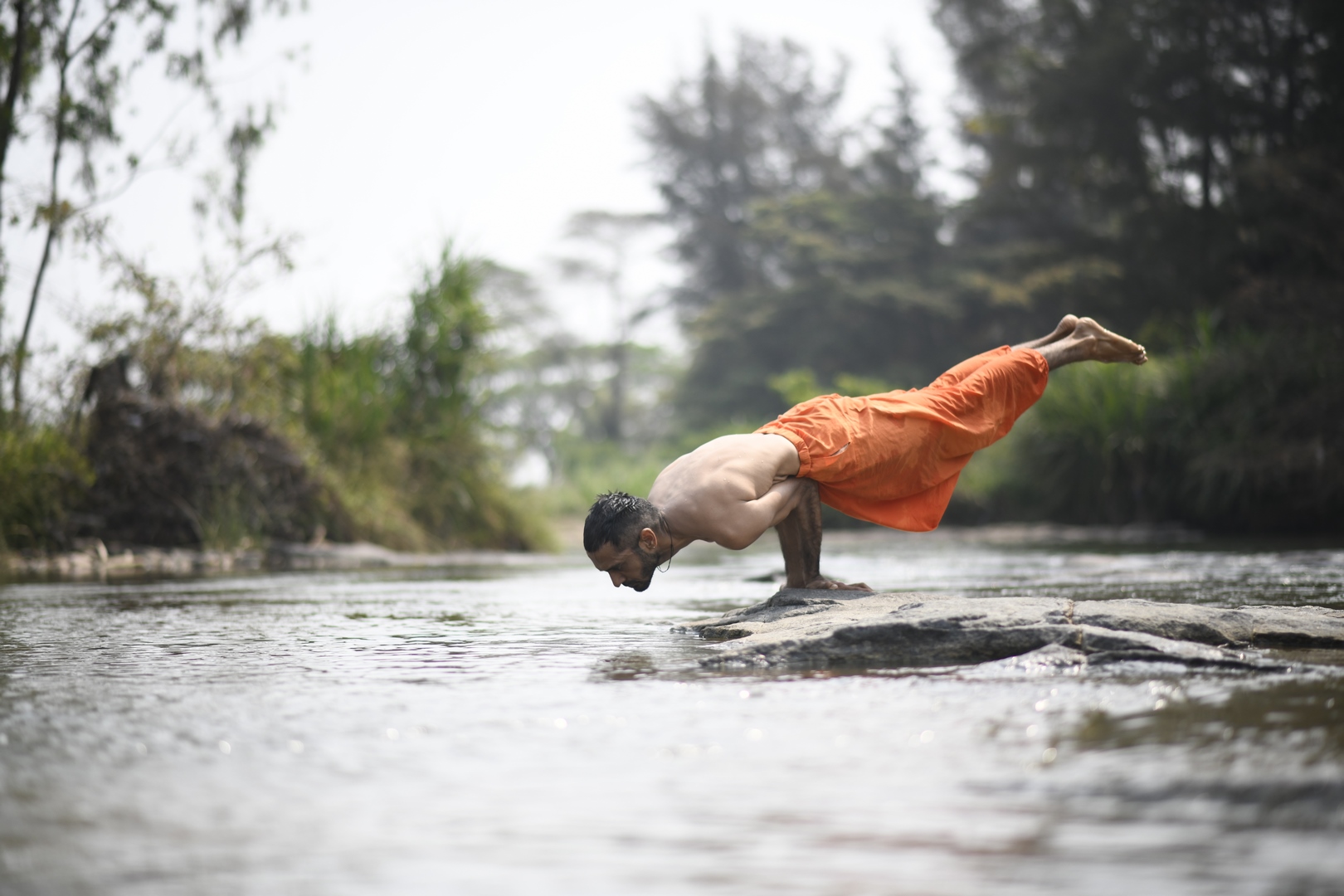FORCING – we often focus on the final position or what is given, in this case, reaching the toes. Although we may be close to catching them, we should respect the process. By crossing the limits, we reach a state of tension and accelerated or even held breath, where the body will fail to relax deeper into the position. Patience and conscious breathing is the key to success.

ROUNDED BACK – is a common problem when bending forward, if the hamstrings are stiff. However, the idea is not to further stretch the lower back. If we cannot sit at a right angle – with our back straight and our legs stretched out in front of us, it is advised to sit on a block to raise the pelvis, and wrap a band around the feet to keep the spine straight.

‘’SLEEPING’’ – Forward bend is not a passive position where the torso “hangs” over the thighs, nor should we try to push our head onto our knees without first making contact with the abdomen and thighs. Forward bend is initiated by the pelvis moving into an anterior tilt – the sit bones move back and the lower ribs point in the direction of the knees. Ribs broaden toward the knees.
EXTERNAL ROTATION OF THE LEGS – is manifested in relaxed feet that fall to the side. When leaning forward, the feet are pulled towards the torso (flexion) with the big toes and inner feet touching. The heels press lightly into the floor. There is pronounced activation of the inner thighs, pelvic floor, and anterior calves.




